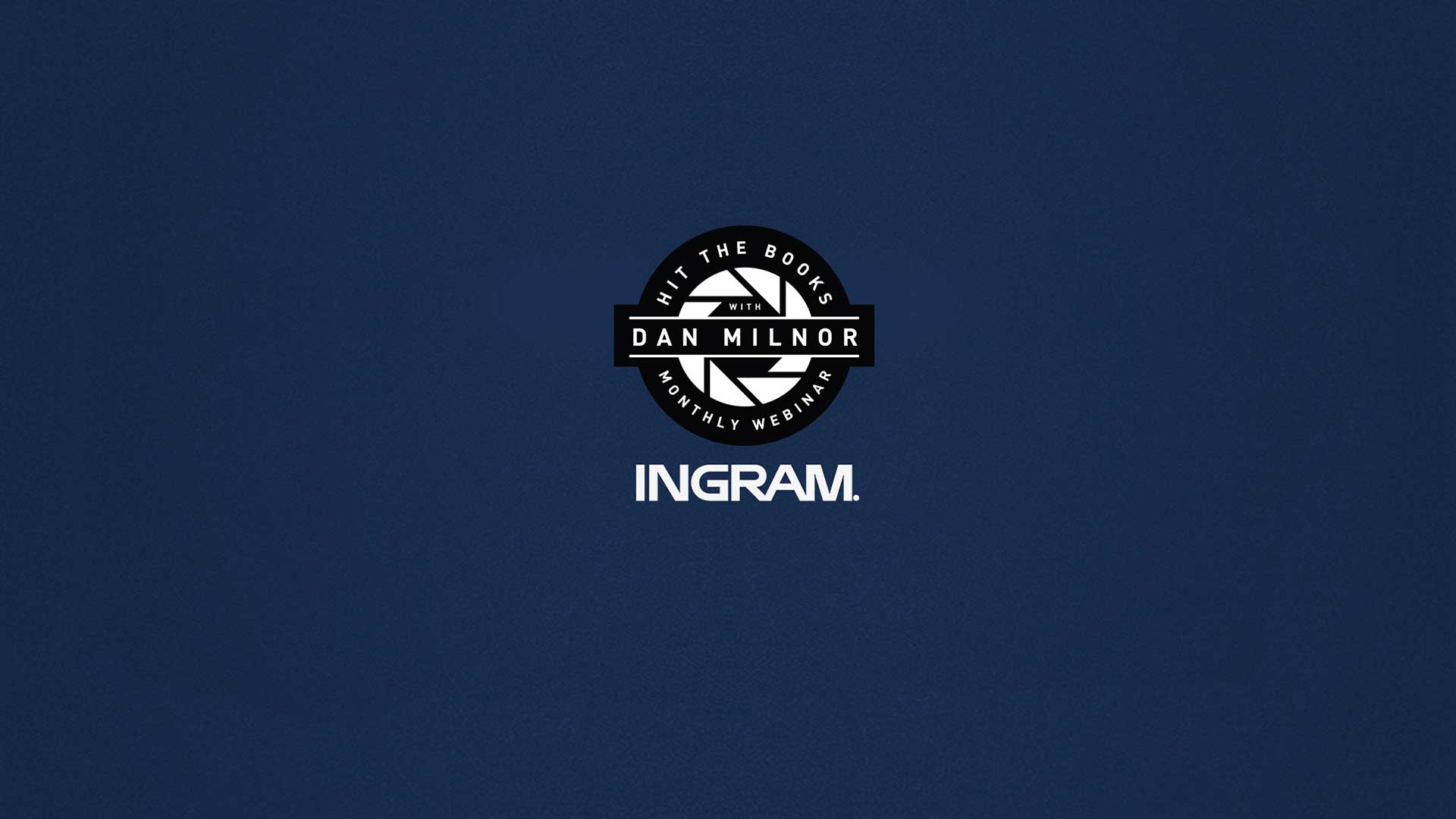Hit the Books with Dan Milnor & Ingram
Hit the Books with Dan Milnor is a monthly webinar about all things bookmaking and self-publishing. This month, we’re talking about selling and distribution, with a focus on Blurb’s global distribution partner, Ingram. If you missed our latest live webinar, don’t worry! We’ve got the entire thing recorded below.
Selling and Distribution
Here’s what to expect in our webinar:
- An overview of Blurb’s distribution channels
- How global distribution works with Ingram
- What kinds of titles qualify for global distribution
- Tips on pricing a book to sell
- What happens when a title goes into distribution?
- Tips for keywords and descriptions that can help make your book discoverable
Watch the webinar
Top 10 questions from the audience
1. The book market seems to be a bit erratic these days. Is that true?
In short, yes, but there are reasons for this. The long-tail publishing model has changed over time, and we are seeing continuing change. The other reality is that there are talented authors who, through modern technology tools like Blurb and Ingram, are now able to bring their works to market. So, if the talent is there and the readers, these books can be added to the mix.
2. If we were to look at specific genres—let’s say children’s books, travel books, and large art books—would you say these are all viable genres for Ingram?
For the travel and children’s book categories, I would say, “Yes, for sure.” These are hot topics at the moment. And speaking of hot topics, you could also throw poetry books into the mix. As for the large art books, this is where things get a little tricky. Although there are good papers available via print on demand (POD), there may not be the range of high-end photographic style papers you are looking for in these books.
3. Do I set up my global retail network sales directly on the Blurb site?
Yes. On your author page, simply select your distribution choice. In this case, you choose Ingram Global Retail Network. This works with Blurb trade books.
4. How has the basic foundation of bookselling changed with the advent of things like Ingram?
In short, the model for book selling has changed from print the book then sell the book to sell the book first and then print the copies needed through the print-on-demand system.
5. How important is metadata, and are there tips for getting it right?
Metadata is very important. In fact, I can’t stress this enough. Doing whatever you can to increase awareness of your book is essential for success. There are a few things to keep in mind. First, keep your book description to fifty words or less. A long, rambling description doesn’t help anyone, so keep things tight and to the point. Second, make sure you supply keywords, and when thinking about keywords, think like a buyer, not like an author. Think about what you would search for if you were going to buy your book. Finally, think about the title. Artistic titles are interesting but might not help you sell your book. Descriptive titles might seem less interesting but are far more helpful to buyers.
6. Are there any additional metadata or technical items I need to consider?
Yes, there is something called a BISAC code. These are codes used by companies in the supply chain to categorize topical content. They are essential in helping buyers find your book.
7. What would you say the benefits are to using Ingram versus selling a book from your own website if you can front the cost of a large book order?
These are two entirely different models for publishing. Fronting the money and being able to handle a palette of books being dropped off on your doorstep isn’t something that just anyone can do—or even wants to do. Not to mention, if you do a print run, then have the books delivered to you, there is also the added responsibility of being the shipping department. Again, not everyone is prepared for this. With print-on-demand through Ingram, you are only printing the book after a customer orders, so there is less waste and less work for you, the author.
8. How important is the author’s ability to market their work?
Well, this is a two-part answer. Marketing is critical, but when it comes to selling books, one of the most important points to keep in mind is the wholesale discount you provide. The larger the discount, the more books you will sell. The higher the discount, the broader the distribution possibilities for your book. Some retailers will only accept books with a 55% discount. Even if you are a great marketer or perhaps have a large social following, the discount is critical.
9. Do I need an ISBN number to use the Ingram system, and is the system designed only for trade books?
The answer to both is “yes.”
10. Are there any rookie mistakes to keep in mind?
Yes, but before I answer this, I just want to state that authors have a lot of potential to use this system, so taking the time to understand things like ISBN ownership, list price vs base price, and wholesale discounts is essential. As for rookie mistakes, the key areas where improvements can be made are understanding metadata and understanding the benefits of wholesale discounts.
Additional Resources:
- Information on BISAC publishing codes
- Guidelines for pricing your book
- Using metadata to optimize discovery
- Submitting your book to Ingram’s global distribution network
- Selling photo books on Amazon
- Payment for Ingram sales


This post doesn't have any comment. Be the first one!